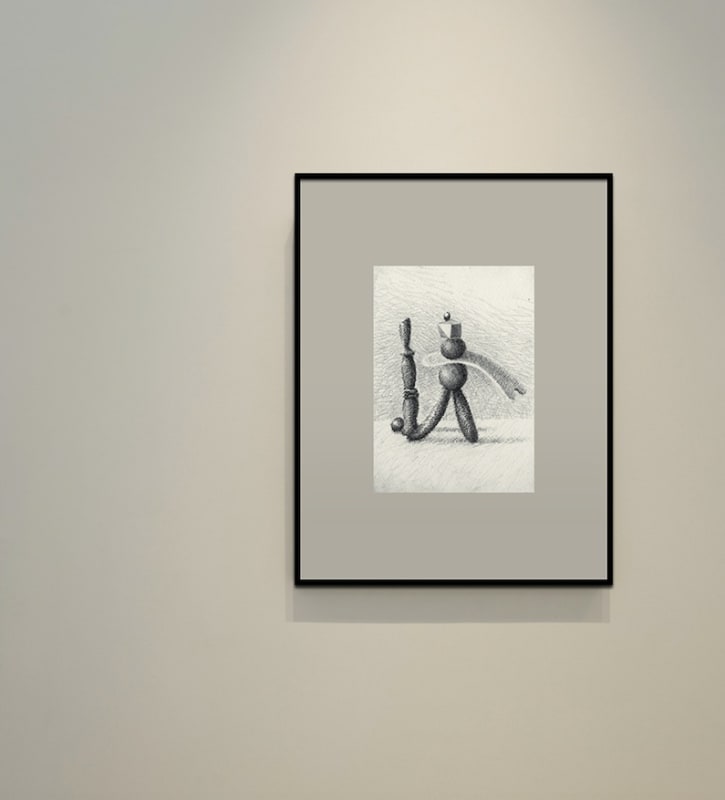“Suddenly, I found the idea of starting a drawing and not knowing what will come out fascinating. I usually even work on two drawings exactly for that. That’s because when I start a drawing sometimes it seems completely impossible that it will work at first. When this happens I stop that drawing, I start another one and when I go back to the original one, to the first drawing, unexpected composition solutions usually appear.”
Jorge Nesbitt
This group of works has as its starting point a group of drawings by Picasso from the late 1920’s, made - in Cannes and Dinard - during the summer. These sketch-book drawings have always fascinated Jorge Nesbitt, both for their formal inventiveness and for their sculptural presence.
Jorge Nesbitt began by making a series of small clay figures composed of overlapping spheres, small pebbles and what appear to be smoothed bones. These object-forms, propped and piled onto each other in precarious arrangements, create an enigmatic static balance reminiscent of ancient dolmens and give them a playful appearance that particularly pleases the artist.
From these figures, Jorge Nesbitt begins to draw from memory in a small sketch-book, without a predefined idea of the final result. This process proves to be conducive to the emergence of unexpected formal responses, exerting a particular fascination on the artist. It is in this particular context that this fascinating set of graphite drawings emerges.
The originality and very personal character of Jorge Nesbitt’s work is born from this complex combination of artistic and literary affinities, associated to a remarkable technical versatility. It is also in this way that his works are inscribed in our time, with the right dose of humor and poetry that are indispensable, especially now at a time when the artist has not had the opportunity to go to the studio, as usual.

